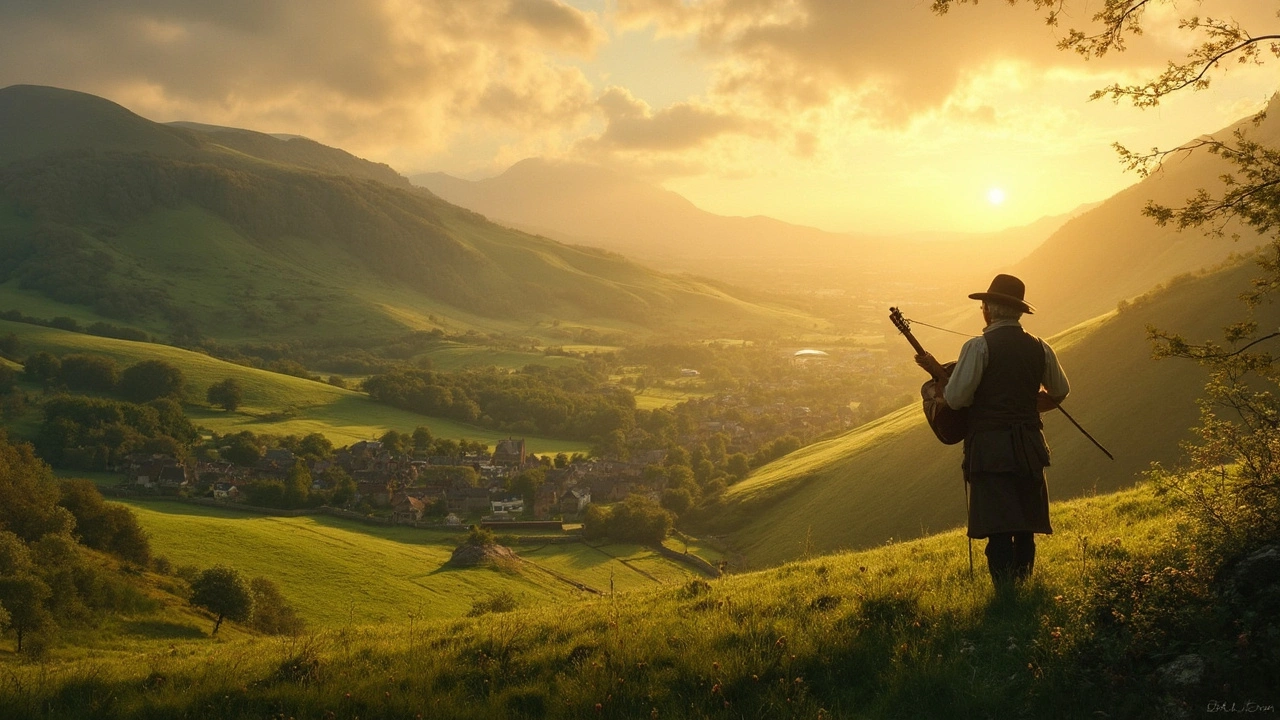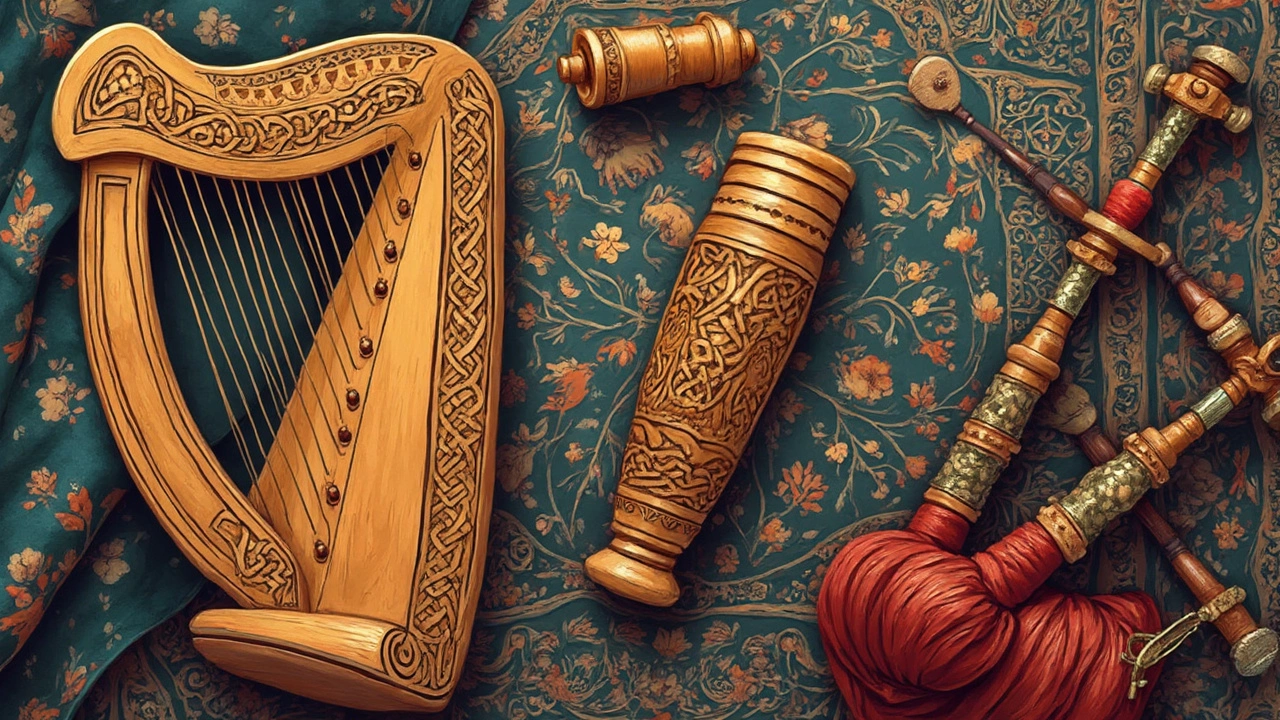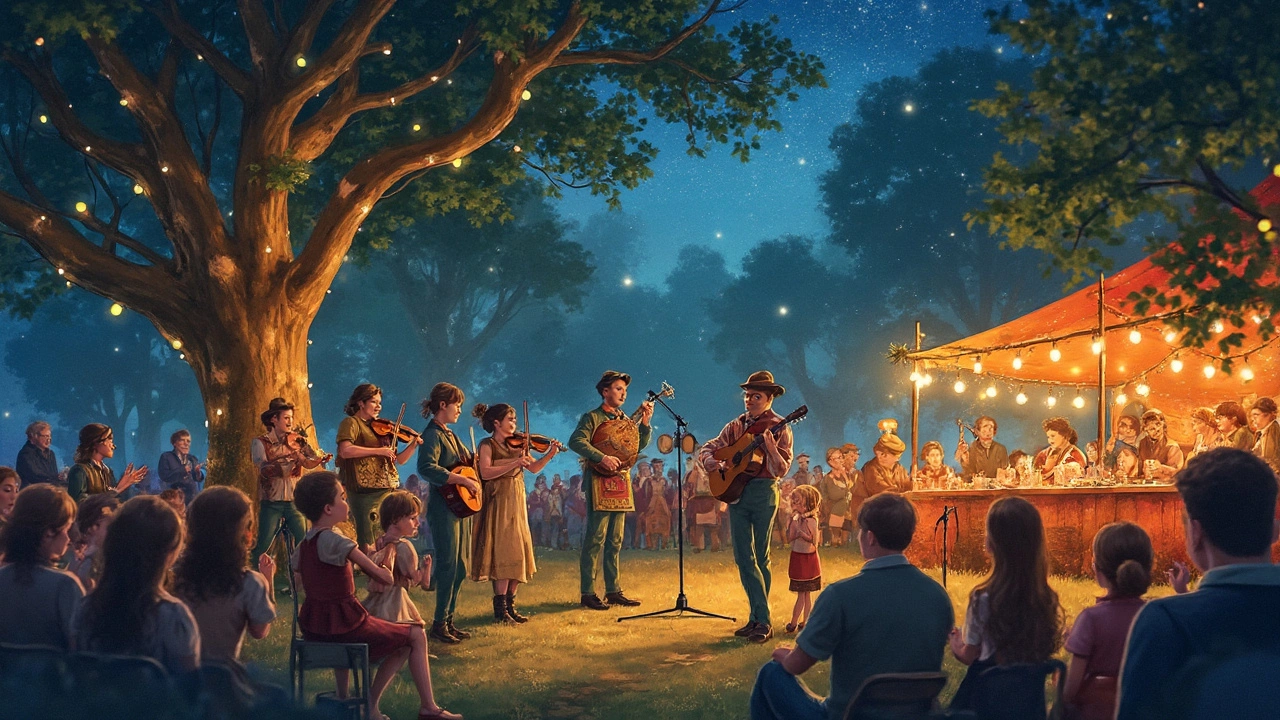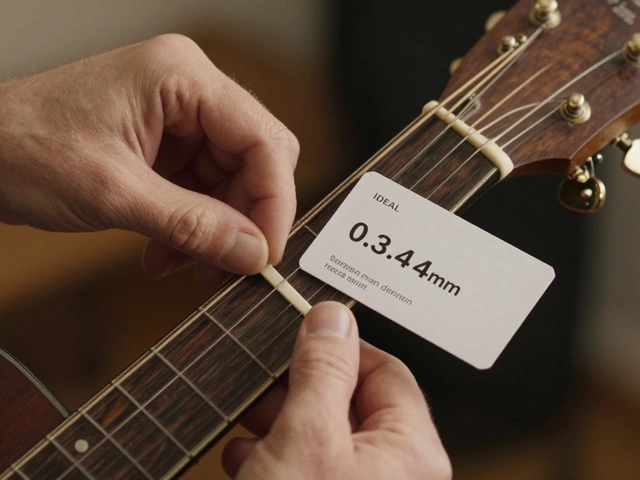Folk music has this incredible way of reaching into your soul and pulling at the strings of your heart. Ever wondered why it's so universal and timeless? It's like a bridge to our roots, connecting generations through simple yet profound tunes. Back in the day, this was how folks preserved their stories and traditions, passing them down like family heirlooms. Nowadays, though we often gravitate towards chart-toppers, folk music quietly continues to share tales of the past.
For many people, folk music is the soundtrack of their heritage. Whether it's the twang of a banjo, the keening sound of a fiddle, or the rhythmic beat of a drum, each element carries distinct tales and traditions. It's those stories and rhythms that make folk music so irresistible—melding lyrics and melodies in ways that modern pop just can't match.
- The Essence of Folk Music
- Stories and Traditions
- Instruments and Styles
- Cultural Connections
- Engaging with Folk Music
The Essence of Folk Music
At its core, folk music is all about storytelling. It's the original way our ancestors passed down history, wisdom, and life's lessons through the ages. You might think of it as the original social media, only without the filters and hashtags! This music is deeply personal but still manages to tap into shared experiences.
A significant feature of folk music is its adaptability. Each performance could be different, with musicians putting their twist on tunes they inherited. This keeps the genre alive, evolving, and relevant. Have you noticed how folk songs often reflect the times they're from? That’s because they’re built on the experiences and struggles of common people, turning historic events into memorable melodies.
Roots and Heritage
Folk music often carries the heartbeat of cultural identity. Think about Irish jigs or American bluegrass, and you'll see how these musical traditions mirror the societies they come from. Each region has its distinct sound, whether it's the soulful inspirations from African tribal beats or the rhythmic cadences from Latin American backgrounds.
Common Elements
You might be wondering what makes folk music stand apart from other genres. Well, it prominently relies on acoustic instruments like guitars, fiddles, and mandolins. These aren’t just any instruments, but ones deeply rooted in tradition. The lyrics are usually straightforward, yet they pack a punch, full of layers and depth.
All in all, folk music isn’t just about the notes. It's about the stories it tells and the part it plays in keeping heritage alive. Next time you tap your foot to a tune that's been around for centuries, remember, you're not just enjoying music—you're partaking in history.
Stories and Traditions
Folk music is all about telling stories. In times gone by, before Netflix and podcasts, folk music was the entertainment that spread news, shared dreams, and reinforced culture. These songs carried the tales of everyday happenings, historical events, and communal beliefs. It's like musical journalism from back in the day.
Different regions have their unique spin on folk music, showcasing local traditions and stories. Consider Irish ballads, which often recount the legends of heroes and battles. Then, shift over to American bluegrass, where songs may tell tales of frontier life and love lost to the wilderness.
The Power of Oral Tradition
The beauty of folk music lies in its oral tradition. For generations, these songs have been passed down by ear, each person adding their own flair. It's a living art form, flexing and changing with each new rendition. Some melodies you hear today could be centuries old, although they may have evolved a bit along the way.
And it wasn't just about entertainment. Folk music played a pivotal role in preserving languages and dialects too. Gaelic songs, for instance, helped keep the Irish language alive during times when it faced decline. That's a pretty powerful testament to the cultural weight folk music carries.
Enduring Relevance
Even in our fast-paced world, folk music continues to resonate, revealing timeless truths about human experiences. These songs haven't been diluted by fancy production but remain raw and genuine. They're a reminder of simpler times, conveying authenticity that often feels missing in modern music.
If you're keen to dive deeper into folk music, try exploring different regions' folk traditions. You'll discover a treasure trove of stories and historical insights that textbooks often miss. Who knew that tuning into a folk song could also be a history lesson?

Instruments and Styles
When we talk about folk music, it's almost impossible not to mention the distinct instruments that give this genre its unique sound. These instruments aren't just tools for making music; they're storytellers in their own right, each with its character and tale.
The Fiddle and the Banjo
The fiddle, often considered the backbone of folk music, creates a rich tapestry of sound that's as versatile as it is expressive. From Irish jigs to Appalachian ballads, the fiddle's stringed brilliance has been a staple in translating emotion and narrative into music.
Meanwhile, the banjo, with its distinctive twang, is another icon of folk music. Initially an African instrument, it became synonymous with American folk, adding lively rhythms to tunes and making dances that much more energetic.
Beyond the Strings: Drums and Flutes
Now, let's not forget the power of percussion. Drums in folk music provide more than just a beat; they set the mood and drive the rhythm home. In various regions, like Native American communities, drums are central to ceremonial music, resonant with deep significance.
Flutes also bring a breath of fresh air to folk music. Think flutes in Andean music, where quenas and panpipes tell stories of the mountains and ancient cultures.
Styles and Regional Differences
Folk music isn't a monolith; it's as varied as the regions it hails from. Each area spices up its folk tunes with instruments available and relevant to its traditions. For instance, Celtic folk music employs harps and bodhráns, whereas Australian bush music might include the didgeridoo.
Interestingly, despite these regional differences, there's often a shared sense of storytelling and community involvement in folk music. It's about participation, where anyone can join in, whether you're a seasoned musician or just happy to tap your foot along.
In summary, the world of folk music is like a vibrant mosaic, pieced together from instruments and styles from cultures worldwide. Whether it's a fiddle's graceful melodies or a drumbeat's grounding resonance, each instrument and style brings out the soul-stirring nature folk music embodies.
Cultural Connections
When it comes to folk music, its power lies in the deep cultural connections it fosters. Each tune is like a fingerprint of its community, carrying the uniqueness of local stories and values. Whether from the Appalachian Mountains of the United States or the lively villages of Ireland, folk music reflects the soul and history of its people.
One notable example is the Australian folk scene, which intricately weaves together Indigenous stories and those brought by European settlers. This unique blend creates a musical tapestry that speaks of the land, its people, and their lived experiences.
Shared Traditions Across Borders
Interestingly, many musical traditions overlap across cultures. Take for instance, the ballad. Found in both Scottish and American folk music, it tells timeless tales of love, battle, and heroism. This demonstrates how music travels and evolves as communities migrate and mix.
Instruments like the fiddle and banjo have also found homes in multiple cultures. The banjo, originally African, became a staple in American bluegrass, symbolizing how migration enriches the musical landscape.
Folk Music in Numbers
To get a sense of how widespread and influential folk music can be, here’s a quick look at some fascinating stats:
| Country | Number of Recognized Folk Songs |
|---|---|
| Ireland | Over 1,000 |
| China | More than 3,000 |
| United States | Around 600 |
These numbers only scratch the surface, as countless tunes continue to be passed down orally, never written down yet deeply cherished by local communities.
The beauty of folk music is how it connects distinct cultures, bridging differences while celebrating unique heritage. Engaging with it can be a deeply enriching experience, allowing us to appreciate the shared humanity resonating through simple melodies.

Engaging with Folk Music
So, you're curious about diving into the world of folk music? Great choice! It's an adventure that connects you to timeless stories and cultural echoes. Folk music can seem like a niche corner of the music world, but there are so many accessible ways to get involved and appreciate its unique charms.
Explore Local Folk Scenes
Start local. Every community boasts its own flavorful blend of musical tradition. Seek out local gigs or festivals. Most cities have gatherings that celebrate this genre, providing an opportunity to experience the live magic of folk. Perth, for instance, hosts annual events where folk bands come together, showcasing everything from Celtic ballads to indigenous tunes.
Learn an Instrument
Instruments are the backbone of folk music. Ever thought about picking up a banjo or learning the subtle art of the fiddle? Both are quintessential to the folk music experience and surprisingly accessible with a little practice. Many online resources and community centers offer beginner classes, making it a breeze to jump in and strum along.
"Folk music is the raw expression of life, emotion, and history. It echoes timeless truths that resonate at every age." - Pete Seeger
Join a Folk Music Group
If playing solo isn't your thing, consider joining a folk music ensemble or jam group. These gatherings are not just about playing music but also about socializing and sharing communal stories. It’s a fantastic way to immerse yourself in different styles and make connections with folks who share your passion.
Listen and Expand Your Playlist
Listening is learning. Dive into vast collections of folk music available on streaming platforms. Build your playlist by mixing classics with contemporary artists who are reviving old traditions. You’d be surprised how they blend past with present, making it relevant for today’s ears.
Embrace Cultural Heritage
Lastly, let folk music be your passport to cultural heritage. Understanding the stories behind the music deepens the appreciation. Many albums come with liner notes explaining the origins of songs and their significance. A deeper dive could even lead to researching about the cultures and stories that shaped the lyrics.
Folk music is not merely a genre; it's an experience that brings people together, bridging cultural divides and preserving oral histories. So, take a step into this captivating world and let the rhythms and tales transport you.





